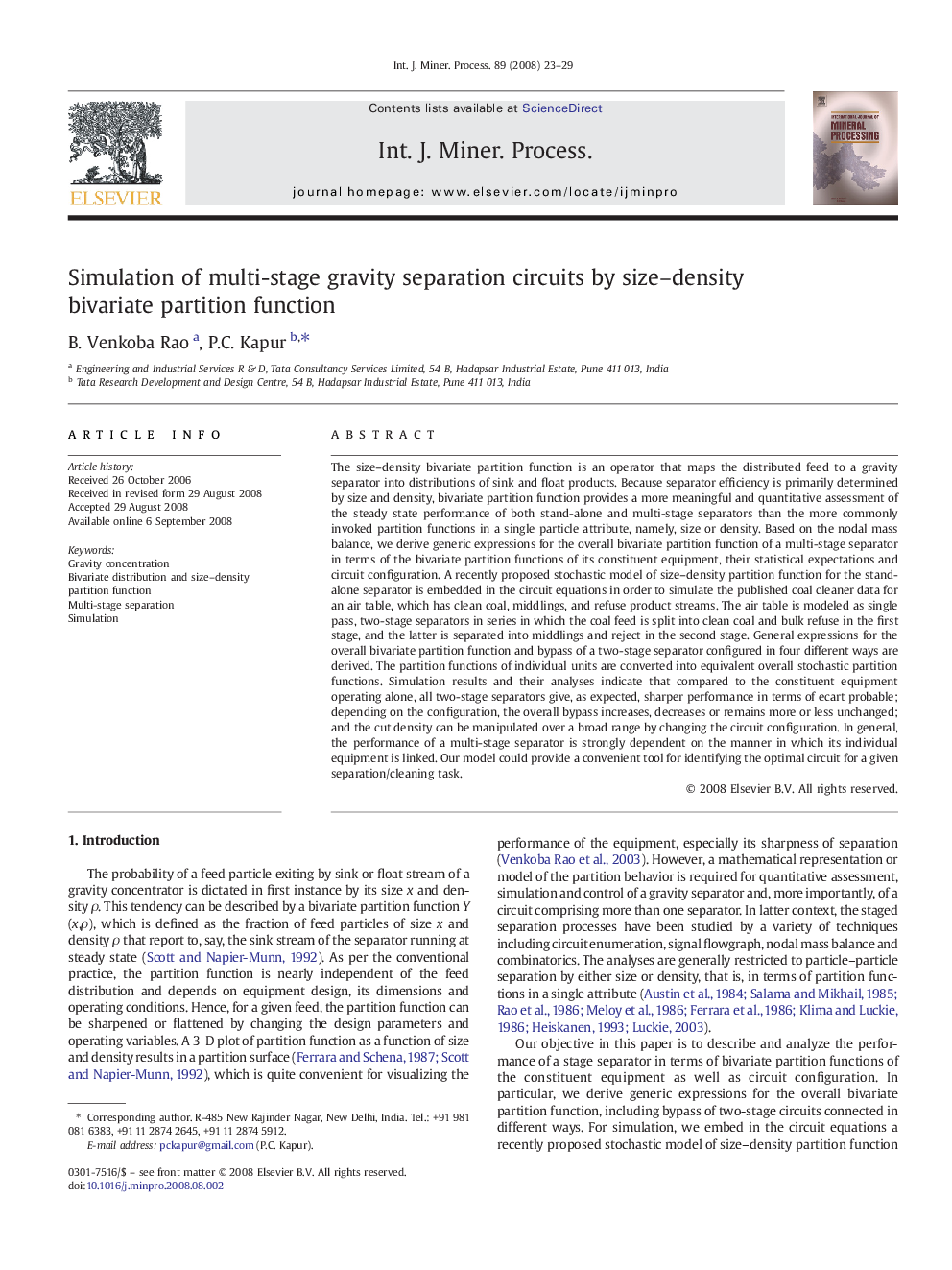| کد مقاله | کد نشریه | سال انتشار | مقاله انگلیسی | نسخه تمام متن |
|---|---|---|---|---|
| 214412 | 1425841 | 2008 | 7 صفحه PDF | دانلود رایگان |

The size–density bivariate partition function is an operator that maps the distributed feed to a gravity separator into distributions of sink and float products. Because separator efficiency is primarily determined by size and density, bivariate partition function provides a more meaningful and quantitative assessment of the steady state performance of both stand-alone and multi-stage separators than the more commonly invoked partition functions in a single particle attribute, namely, size or density. Based on the nodal mass balance, we derive generic expressions for the overall bivariate partition function of a multi-stage separator in terms of the bivariate partition functions of its constituent equipment, their statistical expectations and circuit configuration. A recently proposed stochastic model of size–density partition function for the stand-alone separator is embedded in the circuit equations in order to simulate the published coal cleaner data for an air table, which has clean coal, middlings, and refuse product streams. The air table is modeled as single pass, two-stage separators in series in which the coal feed is split into clean coal and bulk refuse in the first stage, and the latter is separated into middlings and reject in the second stage. General expressions for the overall bivariate partition function and bypass of a two-stage separator configured in four different ways are derived. The partition functions of individual units are converted into equivalent overall stochastic partition functions. Simulation results and their analyses indicate that compared to the constituent equipment operating alone, all two-stage separators give, as expected, sharper performance in terms of ecart probable; depending on the configuration, the overall bypass increases, decreases or remains more or less unchanged; and the cut density can be manipulated over a broad range by changing the circuit configuration. In general, the performance of a multi-stage separator is strongly dependent on the manner in which its individual equipment is linked. Our model could provide a convenient tool for identifying the optimal circuit for a given separation/cleaning task.
Journal: International Journal of Mineral Processing - Volume 89, Issues 1–4, 5 December 2008, Pages 23–29